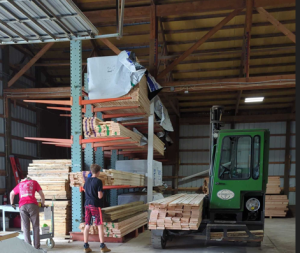Flat Use Factor (Cfu) for Dimensional Lumber
For those who have not had their eyes glaze over from my recent articles on S (or Sm) Section Modulus or Cf (size factor adjustments), I bring, in all its glory, Cfu (Flat Use Factor).
Although produced in a factory environment (a saw mill), wood is a non-uniform material and doesn’t behave identically when bent about different axes (yes, this is plural of axis). Tabulated strength values are always based upon strong axis (x-x direction), so a modifier was created based upon actual physical testing, to adjust for loads placed about a board’s weak axis (against wide face, or y-y).
Look at it this way, if a board has a knot in one spot, and is bent about its strong axis, said knot may have a significant effect on overall strength, since this knot can alter effective depth (d).
Lay board flat and a knot only effects a portion of width (b), so effect on flexural (bending) strength is less pronounced.
Allowable bending strength (Fb) is based upon strong axis bending and takes into account statistical variation of flaws and their effect on “d” (depth). When used flatwise, Fb values can be increased to account for this less pronounced effect.
Looking at this example, if this was a joist (or purlin) bent about its strong axis, this knot will significantly affect allowable tension or compression stress, in joist’s extreme fiber. However, used flatwise, affected area is only a portion of extreme fiber and thus defect is less important. Wood allowable stress values are based on some amount of defects and thus they are already reduced for strong axis bending. In weak axis bending this assumption is taken out.
For 2×4 and 2×5 Cfu = 1.1, 2×6 and 2×8 = 1.15, 2×10 and wider = 1.2.







